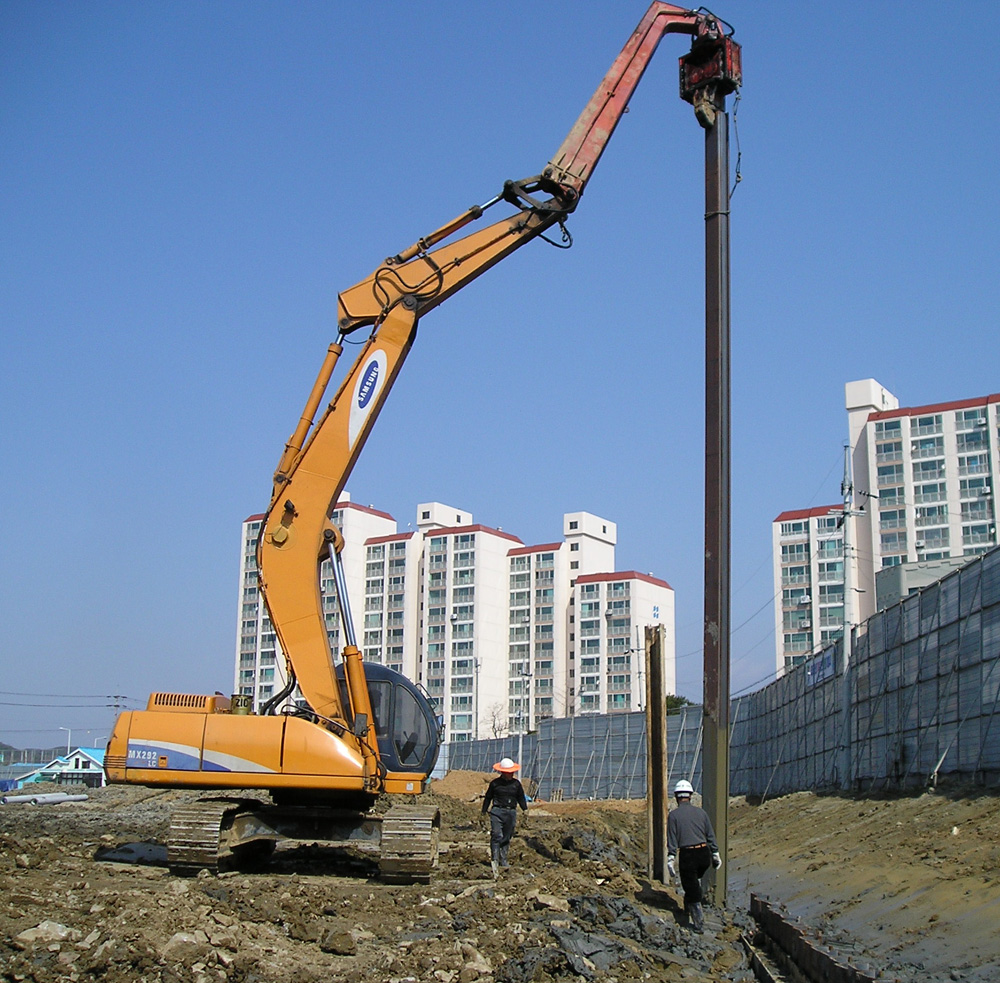Piling mat
Pile foundations are a type of deep foundation, principally used to transfer loads from superstructures, through weak, compressible strata or water onto stronger, more compact, less compressible and stiffer soil or rock at depth. They are formed by long, slender, columnar elements typically made from steel or reinforced concrete, or sometimes timber.
They are constructed by displacement (driven) or replacement (bored).

|

|
A piling mat is a type of working platform used for piling rigs to travel on, providing a stable base on which they can move around the site and operate.
The design of piling mats will depend on the ground conditions and the piling equipment being used, as well as the rig loadings (which typically range from 5 to over 150 tonnes). If a piling mat is too deep it will be incurring unnecessary costs, whilst if it is too shallow it may need time- and cost-inefficient repairs. A soft spot in the surface of just 1 sq. m, can be enough to unbalance a rig.
Typically, the top of a piling mat will be around 600 mm above the pile cut-off level, and it will extend beyond the outermost pile positions by at least 2 m. The edges of the mat and the ramps onto and off it should be clearly marked.
The most suitable materials for piling mats are generally well-graded natural gravels, clean-crushed concrete, crushed hard rock, and so on. As long as it has rebar and timber removed, graded recycled demolition material can also be used. Mats are rolled and compacted in layers. The mat should be free-draining to prevent any build-up of water or slurry on its surface. On sites with a high water table, a separating membrane may be positioned between the mat and the sub-grade to prevent the upward migration of fine-grained soils into the mat.
Piling mats should be inspected daily to ensure they are in proper working condition. If any excavations, trenches or holes have formed in the surface, they must be properly backfilled to ensure they are as stable as the rest of the mat.
It is mandatory that every site with an operational piling rig has a Working Platform Certificate (WPC) that states the piling mat has been correctly designed and installed. The WPC must be signed by the principal contractor and provided for the piling contractor before any piling commences on the site.
[edit] Find out more
[edit] Related articles on Designing Buildings Wiki
Featured articles and news
Homes England creates largest housing-led site in the North
Successful, 34 hectare land acquisition with the residential allocation now completed.
Scottish apprenticeship training proposals
General support although better accountability and transparency is sought.
The history of building regulations
A story of belated action in response to crisis.
Moisture, fire safety and emerging trends in living walls
How wet is your wall?
Current policy explained and newly published consultation by the UK and Welsh Governments.
British architecture 1919–39. Book review.
Conservation of listed prefabs in Moseley.
Energy industry calls for urgent reform.
Heritage staff wellbeing at work survey.
A five minute introduction.
50th Golden anniversary ECA Edmundson apprentice award
Showcasing the very best electrotechnical and engineering services for half a century.
Welsh government consults on HRBs and reg changes
Seeking feedback on a new regulatory regime and a broad range of issues.
CIOB Client Guide (2nd edition) March 2025
Free download covering statutory dutyholder roles under the Building Safety Act and much more.
Minister quizzed, as responsibility transfers to MHCLG and BSR publishes new building control guidance.
UK environmental regulations reform 2025
Amid wider new approaches to ensure regulators and regulation support growth.
BSRIA Statutory Compliance Inspection Checklist
BG80/2025 now significantly updated to include requirements related to important changes in legislation.























Comments
Please state where, other than on the PSF website, it is mandated that a WPC to be used as verification of a piling mat. As temporary works, a working platform could be commissioned through a permit to load like any other BS 5975-managed system.